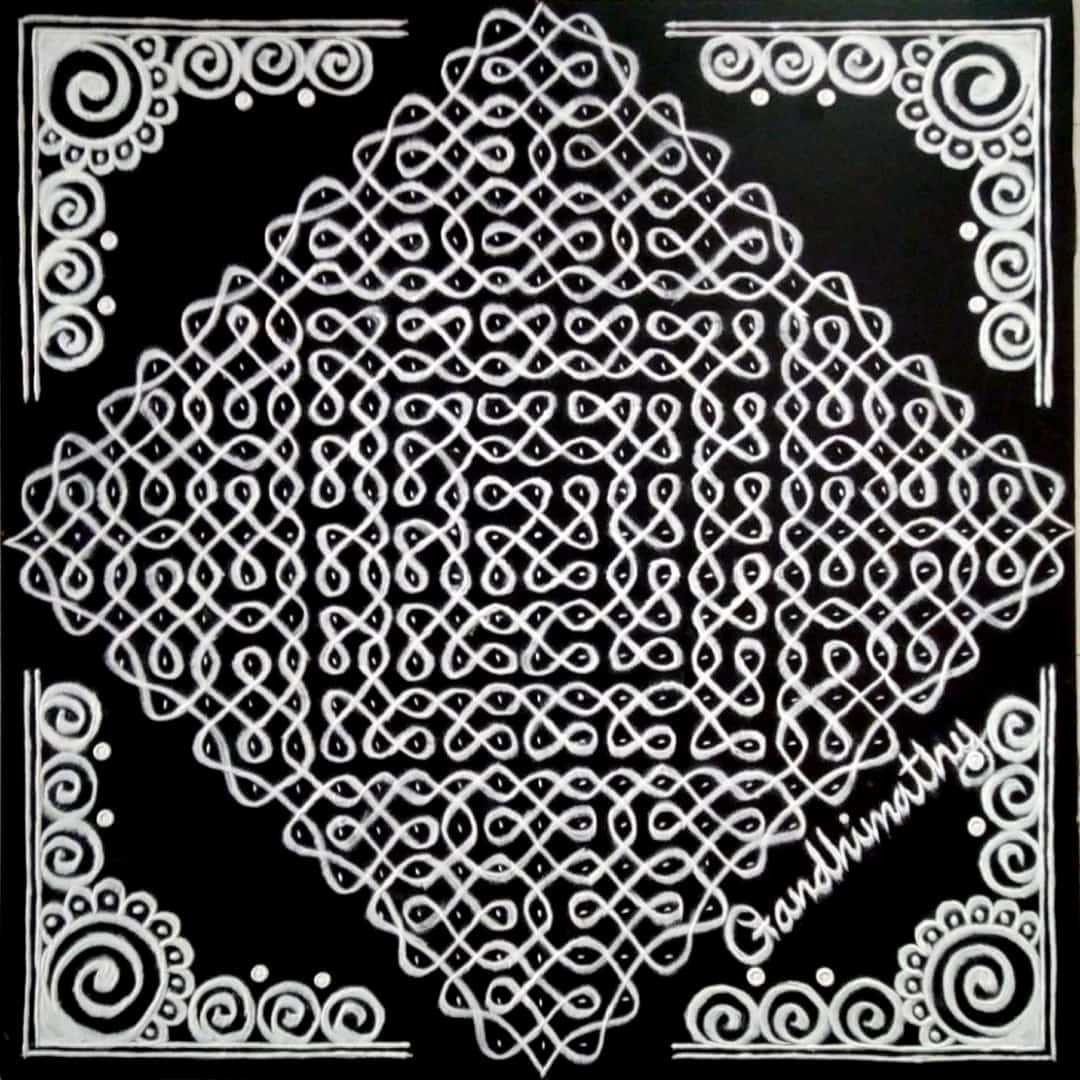Rangoli - ముగ్గులు - Art from the South
Kolams are a means of expression, inspiring thought. As they say, face is the index of a man, in the same way a kolam is the index of a house. Looking at such art, it is safe for one to predict before entering the house itself that it would be immaculate. Some call it rangoli, while others call it kolam. The name varies as we travel across India. Irrespective of what it’s called by, a simple rangoli conveys numerous emotions but most notably, it instills a beautiful feeling of welcome to anyone entering the house - a swaagatam without words being spoken. Right from when I was a kid, I’ve seen my mother draw a kolam first thing in the morning right after she wakes up. She learnt most of it from my grandmother and my great grandmother - the designs being preserved in an old notebook. Kolams are put during festivals - be it on Ganesh Chaturthi, Navratri, Deepavali, Krishnashtami, and also on special occasions of marriages. Apart from the customary habit of buying new clothes, decorative items, cooking sweets during these joyous times, drawing a kolam adds more colour and beauty to the same. I personally enjoy filling colours in it - the colour combinations, intricate designs never fail to fill my mind with curiosity. I inculcated this habit of exploring kolams when I was 6 years old. I was taught the Chikku kolam, which is a design comprising of dots and curved lines around the same. I started out with small ones, but with time, my kolams started growing along with my love for them. It really did improve my focus, and at the same time was, and always will be a great stress reliever. It was also a great exercise to my body as drawing a kolam requires one to bend and stretch, making one be active all day.

The customary practice of putting kolams started in the Tretayug. Goddess Sita used to fill the house with rangolis when she was in the forest with Lord Rama, and this custom still continues. Since ages, it’s a common belief that a kolam brings good health and success to the people living in a house. It has a lot of resemblance with life. The lines go up, down, twist and turn, but at the end when you finish and take a look at what you drew, it turns out to be a beautifully curated design. The same goes about in life too. The ups and downs or successes and failures we face in life shape us accordingly. At the end of the day, when you look back, you are what you experience and face. The end result is always beautiful. As someone who’s from Andhra Pradesh, I do really take pride in showcasing the practices and beliefs of my state. There is a level of satisfaction in getting to know one’s culture, as well as the customs of people coming from different states. The diversity India showcases across different regions is something to be really proud of. Through this piece on kolams, I dwelled on how rich our heritage is. Though we come from different states, communities, speak different languages, celebrate various festivals, have different ideologies, at the end of the day, we’re all Indians. There is unity in diversity.